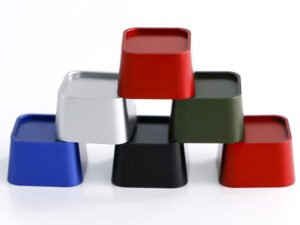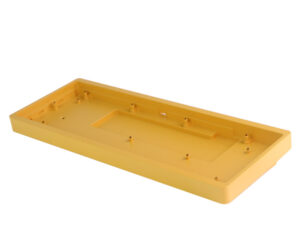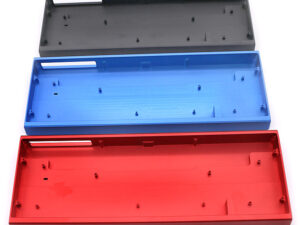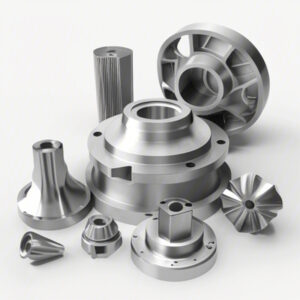Selecting the right material is one of the most critical decisions in CNC machining. The material not only affects the machining process but also determines the performance, durability, and aesthetics of the finished product. Having worked extensively in this field at YL-Machining, I’ve seen firsthand how choosing the right material can make or break a project.
In this comprehensive guide, we’ll explore common materials used in CNC machining, their properties, and practical tips for making the best choice for your specific needs.
1. Why Material Selection Matters in CNC Machining
Have you ever faced project delays or poor-quality outputs due to material issues? If yes, you’re not alone. The material you choose directly impacts:
- Machinability: Some materials are easier to machine, saving time and costs.
- Durability: The lifespan of your final product depends heavily on material strength.
- Aesthetics and Finish: Certain materials allow for smoother finishes or attractive appearances.
- Budget: The cost of materials can vary widely, affecting overall project expenses.
At YL-Machining, we believe that understanding material properties upfront can prevent costly errors and ensure top-notch results.
2. Overview of Common CNC Machining Materials
Metals
Aluminum
Aluminum is the go-to choice for many industries due to its excellent machinability, strength-to-weight ratio, and corrosion resistance.
- Advantages: Lightweight, affordable, and easy to machine.
- Applications: Aerospace components, automotive parts, and consumer electronics.
- Considerations: Susceptible to scratches; may require anodizing for enhanced durability.

Steel
Steel offers unmatched versatility and strength, making it suitable for a wide range of applications.
- Advantages: High strength and can be heat-treated for enhanced properties.
- Applications: Structural components, tools, and heavy machinery.
- Considerations: More challenging to machine than aluminum; requires robust tooling.
Stainless Steel
If corrosion resistance and aesthetics are priorities, stainless steel is an excellent choice.
- Advantages: Resistant to rust, wear, and chemical exposure.
- Applications: Medical devices, marine equipment, and kitchenware.
- Considerations: More expensive and harder to machine.
Titanium
Known for its high strength-to-weight ratio, titanium is favored in demanding industries like aerospace and medical.
- Advantages: Lightweight, corrosion-resistant, and biocompatible.
- Applications: Aircraft parts, implants, and sports equipment.
- Considerations: High cost and requires advanced machining techniques.

Brass
Brass combines excellent machinability with an attractive finish, making it ideal for precision parts.
- Advantages: Corrosion-resistant, easy to machine, and has a polished appearance.
- Applications: Plumbing fittings, gears, and decorative elements.
- Considerations: Higher material cost compared to some alternatives.
Plastics
ABS
ABS is a widely used thermoplastic known for its toughness and ease of machining.
- Advantages: Affordable, impact-resistant, and easy to polish.
- Applications: Prototypes, automotive parts, and consumer products.
- Considerations: Limited heat resistance compared to other plastics.
Nylon
Nylon offers excellent wear resistance and flexibility, making it suitable for moving parts.
- Advantages: High strength, low friction, and chemical resistance.
- Applications: Bearings, gears, and bushings.
- Considerations: Absorbs moisture, affecting dimensional stability in humid environments.
Polycarbonate
Polycarbonate is prized for its transparency and impact resistance.
- Advantages: Lightweight, durable, and optically clear.
- Applications: Bulletproof glass, safety equipment, and lenses.
- Considerations: Expensive compared to other plastics.

PEEK
If your project demands high performance, PEEK delivers unmatched thermal and mechanical stability.
- Advantages: Heat-resistant, chemically inert, and biocompatible.
- Applications: Aerospace, medical devices, and high-end industrial parts.
- Considerations: Expensive and challenging to machine.
Composites
Composites like carbon fiber and fiberglass combine lightweight with exceptional strength, making them ideal for specialized applications.
- Advantages: Lightweight, corrosion-resistant, and highly durable.
- Applications: Aerospace components, sports equipment, and automotive parts.
- Considerations: Require specialized tools for machining.
3. Factors to Consider When Selecting a Material
1. Project Requirements
Ask yourself: What will the part be used for? Functional requirements like load-bearing capacity or heat resistance should guide your material choice.
2. Machinability
Materials like aluminum and brass are easier to machine, while titanium and some plastics require specialized expertise.
3. Environmental Conditions
Will the part be exposed to moisture, chemicals, or extreme temperatures? Choose materials with the necessary resistance.
4. Surface Finish
Some materials, like aluminum and brass, naturally yield smoother finishes, while others may need additional processing.
5. Budget
Balance material cost with performance. While titanium and PEEK offer superior properties, they may exceed budget constraints for less demanding applications.
4. Material-Specific Considerations in CNC Machining
Tool Wear and Machining Speed
- Softer materials like aluminum allow for faster machining with minimal tool wear.
- Harder materials, such as stainless steel, require slower speeds to preserve tools.
Thermal Expansion
Certain plastics and metals expand significantly under heat, which can affect dimensional accuracy.
Post-Processing Needs
Some materials require anodizing, polishing, or coating to achieve desired finishes or improve durability.
5. How to Balance Material Performance and Project Budget
1. Prioritize Essential Properties
Focus on materials that meet critical requirements rather than overspending on unnecessary features.
2. Consult Experts
If you’re unsure about a material’s suitability, reach out to CNC machining professionals for advice.
3. Optimize Design
Simple design adjustments can often reduce material usage and costs without sacrificing performance.
6. FAQs on Material Selection in CNC Machining
Q: What’s the easiest material to machine?
A: Aluminum is generally considered the easiest material to machine due to its softness and thermal conductivity.
Q: Can I use multiple materials in one project?
A: Yes, but ensure compatibility to avoid issues like galvanic corrosion.
Q: How can I reduce material costs?
A: Use stock materials where possible, simplify designs, and opt for more machinable materials to reduce labor time.
Choosing the right material is a cornerstone of successful CNC machining. At YL-Machining, we take pride in helping our clients navigate these decisions with confidence. If you’re ready to discuss your next project or have questions about materials, feel free to reach out—we’re here to help!




-300x225.jpg)


-300x225.jpg)




